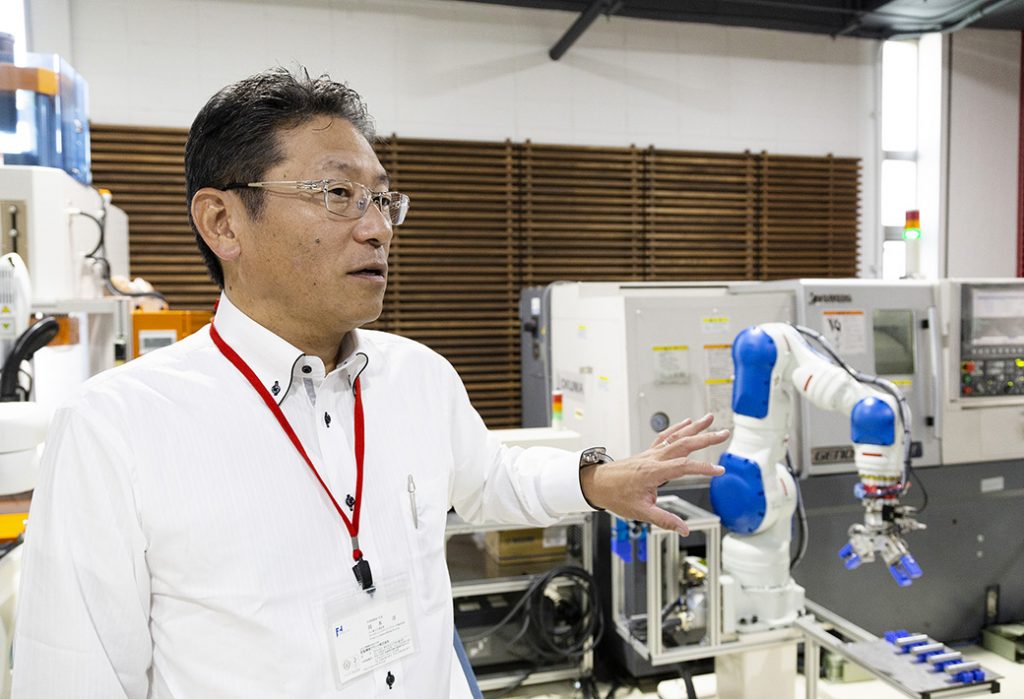
- News
- Basics
- Products
- JP Job shop
- Exhibition
- Interview
- Statistic
- PR
- Download
- Special contents
News
November 26, 2018

Miyawaki Machinery, a distributor of machine tools and industrial robots, exhibited seven-axis robots at its private shows held on August 2 and 3, 2018.
While most industrial robots have six axes, seven-axis models are rare. These robots offer greater flexibility, reaching angles that six-axis robots cannot, and enable more adaptable floor space and line design.
President Atsushi Okamoto emphasized,
“We want to highlight this as one of our proposals to customers.”
Two seven-axis robots drew particular interest from visitors:
A Yaskawa Electric seven-axis robot paired with an OKUMA NC lathe
A Nachi-Fujikoshi seven-axis robot paired with a Brother machining center
The demonstrations included opening and closing machine doors, loading and unloading workpieces, and more.
Regarding the exhibition concept, Mr. Okamoto explained,
“When people hear ‘robot exhibition,’ they often imagine high-speed transfer demos. But we wanted customers to see how robots are actually used in metalworking applications.”
A notable feature was that both seven-axis robots were installed off-center, not directly in front of the machine tool doors.
This layout:
Frees up space in front of the machine for easier manual operation
Clarifies the boundary between human and robot work zones
Mr. Okamoto commented,
“If robots can be installed away from the front, one robot might be able to handle multiple machines in the future.”
In the setup, the robots accessed work stockers placed at the sides of the machines, with multiple fixed-shelf stockers arranged nearby.
The exhibit clearly demonstrated how seven-axis articulation enables access to angles that six-axis robots cannot reach.
Seven-axis robots have an extra rotational joint in the upper arm. This allows:
The upper arm to twist independently
The forearm to tilt horizontally or “lie down”
As a result, the robot’s hand can extend around obstacles and reach between low-positioned shelves, which is difficult for standard six-axis robots.
Mr. Okamoto concluded,
“Having seven-axis robots in our lineup is an important proposal for automation and labor-saving. We will continue to expand system sales using a variety of robot types.”
November 23, 2018
August 1, 2018
July 24, 2018